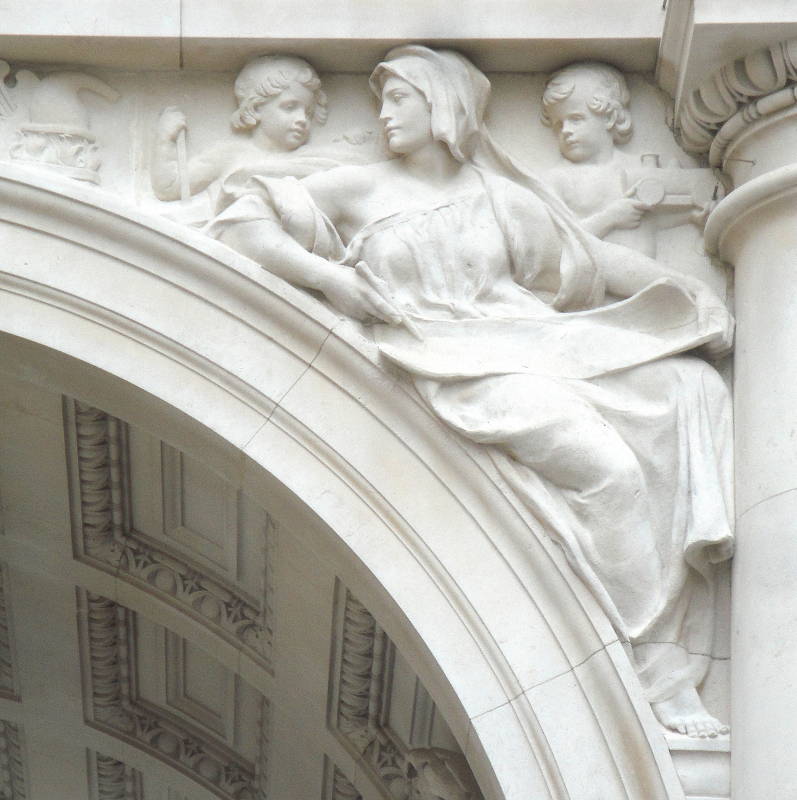
Arch over King Charles Street (view facing King Charles Street). J. M. Brydon, architect (completed by Henry Tanner), and William Silver Frith (1850-1924), sculptor. 1908. Stone, London W1. Montford did the sculptures on the upper part of the outside of the arch, Frith these on the lower and those on the inside. [Click on these images for larger pictures.]
Susan Beattie believes that this work, along with Astor House lamp standards, define “Frith's place in the New Sculpture movement . . . and may fairly be taken to represent his style at its most intimate and individual” (125). According to her the special importance of this work in particular lies in the fact that it represents the last completely successful example of New Sculpture architectural work:
The Whitehall bridge spandrels reassemble - arguably for the last time in an architectural setting — the principles and stylistic resources of the New Sculptors. Products of a movement that Frith had quietly and persistently promoted from its beginnings, the limpid female figures reclining above the three arches bear comparison, not only with the heroic architectural carving and modelling of Bates and Drury and the terse, abstracted reliefs of Frampton and Schenck, but with the pulsating images created by Alfred Gilbert in his early small-scale sculptures in bronze.
By 1900 English sculptors bad developed interests which were increasingly difficult to reconcile with the demands of external architectural decoration. Their passion for colour and rich materials, for example, exquisitely indulged in Lamia and the ivory and bronze ideal sculpture of Bates, Reynolds-Stephens and Frank Lynn Jenkins, had no place there, nor closely observed detail in bold, generalised groups that would tell at some distance from the passer-by. Above all, the visionary, poetic themes they loved were seldom compatible with the boastful political or social messages that architectural figure decoration now frequently required to transmit from the fronts of public buildings and business premises. [125-26]
The Spandrels facing on Charles Street


Left to right: (a) Justice blindfolded with her sword and scales. (b) History, Law, or Literature with pen and book.


Left to right: (a) Geography with her pen and globe. (b) Science and technology, the former represented by chemical apparatus and a geologist's hammer (?), the latter” by a steam locomotives.


Left to right: (a) Government (or Law) with her sceptre and classical be-columned building. (b) Shipping and Navigation, the former represented” by the vesel on the figure's knee, the latter” by charts and books.
Related Material
Photographs and caption by Robert Freidus. Formatting, perspective correction, and commentary by George P. Landow. You may use this image without prior permission for any scholarly or educational purpose as long as you (1) credit the photographer and (2) link your document to this URL in a web document or cite it in a print one.]
Bibliography
Beattie, Susan. The New Sculpture. New Haven: Yale University Press, 1983.
Last modified 13 August 2011